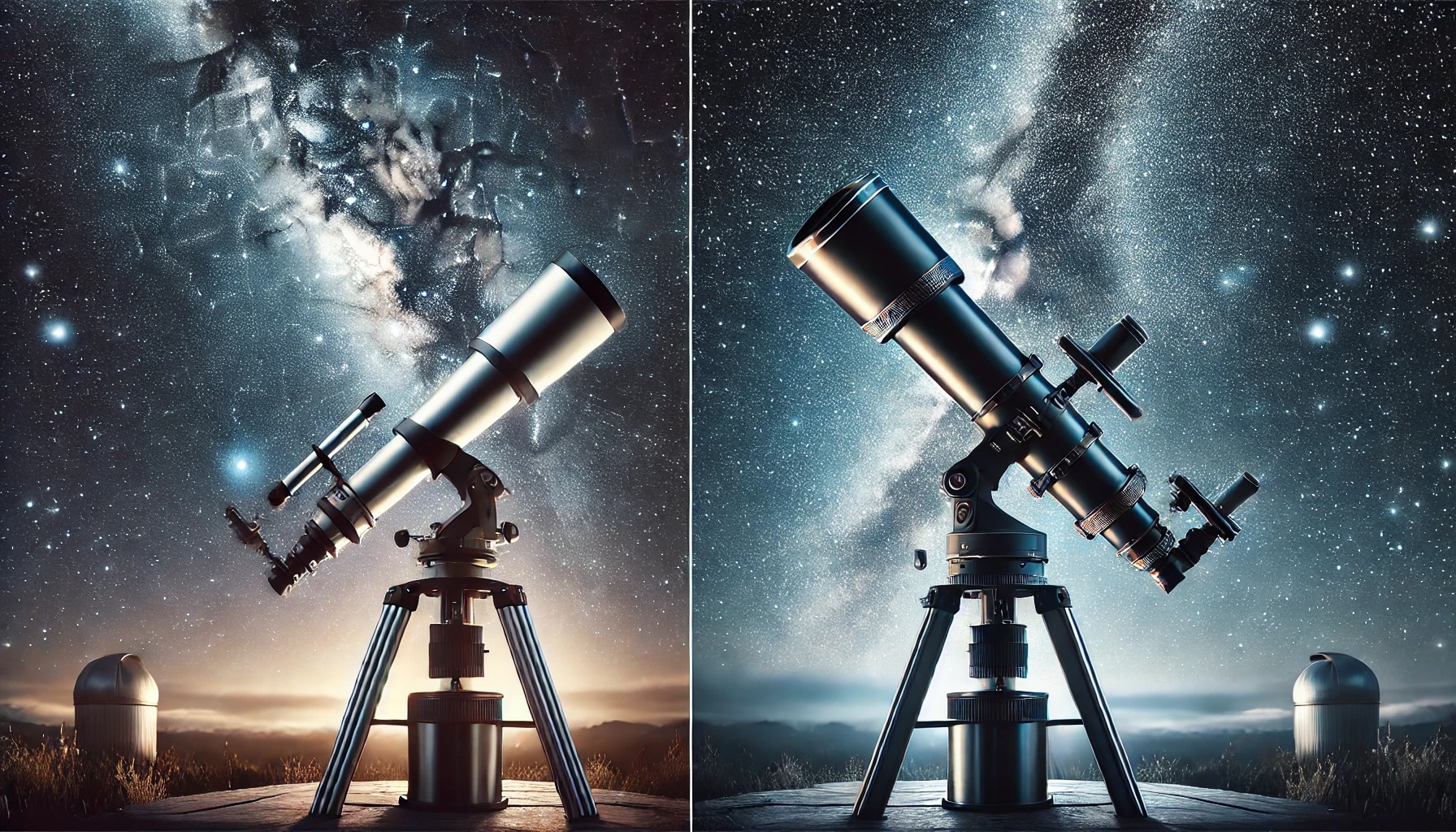Choosing between a reflector and a refractor telescope depends on how and where it will be used. Each type has strengths and limitations that impact performance, maintenance, and viewing experience. Understanding these differences helps in making the right selection.
How Each Telescope Works
Refractor Telescopes
Refractor telescopes use lenses to bend and focus light. The objective lens at the front collects light and directs it to an eyepiece, where magnification occurs. This design provides sharp, high-contrast images with minimal maintenance.
Reflector Telescopes
Reflector telescopes use mirrors instead of lenses. A primary concave mirror gathers light and reflects it to a secondary mirror, which directs the image to an eyepiece. This design allows for larger apertures at a lower cost, making them effective for deep-sky viewing.
Key Differences
Optical Performance
- Refractors excel in contrast and sharpness, especially for planetary and lunar observations. They minimize diffraction and provide crisp details.
- Reflectors offer larger apertures for less money, allowing them to collect more light. This makes them better suited for faint deep-sky objects like galaxies and nebulae.
Portability and Size
- Refractors tend to be longer and heavier for their aperture size, making transport and mounting a factor to consider.
- Reflectors are often more compact for the same aperture, but larger models may require a sturdy mount.
Maintenance and Durability
- Refractors are sealed, reducing dust accumulation and misalignment. They require little to no maintenance.
- Reflectors need regular collimation, which means aligning the mirrors for optimal performance. The open tube can collect dust and require occasional cleaning.
Cost and Value
- Refractors are more expensive per inch of aperture due to precision-ground lenses. High-quality refractors can be costly but deliver exceptional clarity.
- Reflectors provide more light-gathering ability for the same price, making them a cost-effective choice for deep-sky observation.
Best Uses for Each Type
When to Choose a Refractor
- Ideal for viewing planets, the moon, and double stars.
- Great for those who prefer low-maintenance equipment.
- Excellent for astrophotography, particularly when paired with an apochromatic lens.
When to Choose a Reflector
- Best for deep-sky objects like galaxies and nebulae.
- Suitable for those looking for more aperture at a lower price.
- Works well for users willing to perform occasional collimation.
Common Variations
Apochromatic vs. Achromatic Refractors
- Achromatic refractors have two lens elements that correct most chromatic aberration but may still show slight color fringing.
- Apochromatic (APO) refractors have three or more lens elements, offering near-perfect color correction and better image quality, but at a higher cost.
Newtonian vs. Dobsonian Reflectors
- Newtonian reflectors are mounted on an equatorial or alt-azimuth mount and are lighter.
- Dobsonian reflectors use a simple, sturdy mount for large apertures at a lower price, making them popular among beginners.
Choosing the Right One for You
Beginners
- A small refractor (70–100mm) is great for planetary viewing with minimal maintenance.
- A Dobsonian reflector (6–8 inches) offers more aperture for deep-sky observation at an affordable price.
Intermediate Users
- A larger apochromatic refractor (100–120mm) is ideal for planetary and astrophotography.
- A Newtonian reflector (8–10 inches) provides deep-sky detail with manageable maintenance.
Advanced Users
- A premium apochromatic refractor excels in sharp, high-contrast imaging.
- A large reflector (12 inches or more) delivers unmatched deep-sky performance for serious astronomers.
Final Thoughts
Both refractors and reflectors offer unique benefits. A refractor is the better choice for those seeking sharp, high-contrast images with minimal upkeep. A reflector is ideal for those prioritizing deep-sky observation and aperture size within a budget. The right telescope depends on what and how you plan to observe.
